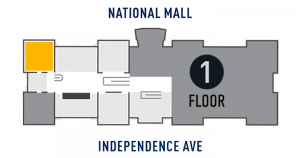Commissioned by Dr. Samuel P. Langley, this engine powered his unsuccessful airplane, known as the Langley Aerodrome A. It was the first internal combustion engine specifically designed for an aircraft. In its original form, the 1899 engine was a 6 kW (8 hp), air-cooled rotary designed and built by Stephen M. Balzer of New York City, N.Y. It derived from his automobile engine of 1894, and was never reliable, only running for a few minutes.
After being redesigned and successfully rebuilt as a water-cooled radial by Charles M. Manly, Langley's assistant, it had the best power-to-weight ratio (1.5 kg/kW or 2.4 lb/hp) of any engine in the world until 1906, and ran for up to 10 hours duration. Manly damaged his eyesight while brazing engine parts, and nearly drowned while piloting the last attempted flight of the Aerodrome on December 8, 1903. The Wright Brothers were successful on December 17.
Display Status
This object is on display in Early Flight at the National Air and Space Museum in Washington, DC.

Object Details
Date
1903
Country of Origin
United States of America
Type
PROPULSION-Reciprocating & Rotary
Designer
Charles M. Manly
Stephen M. Balzer
Manufacturer
Langley-Manly-Balzer
Physical Description
Type: Reciprocating, 5 cylinders, radial, water-cooled
Power rating: 39.1 kW (52.4 hp) at 950 rpm
Displacement: 8.85 L (540 cu in.)
Bore and Stroke: 127 mm (5 in.) x 140 mm (5.5 in.)
Weight (wet): 95.2 kg (209.6 lb)
Dimensions
3-D: 104.1 × 91.4 × 88.9cm (41 × 36 × 35 in.)
Support: 104.1 × 120.7 × 47cm (41 in. × 47 1/2 in. × 18 1/2 in.)
Materials
Metal
Inventory Number
A19080003000
Credit Line
Deposit by the Smithsonian Institution
Data Source
National Air and Space Museum
Restrictions & Rights
Usage conditions apply
For more information, visit the Smithsonians Terms of Use.